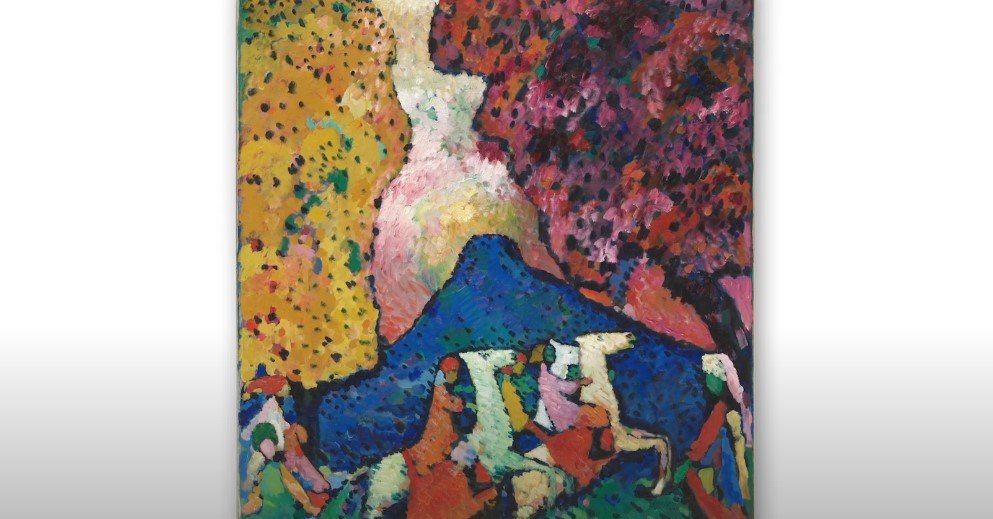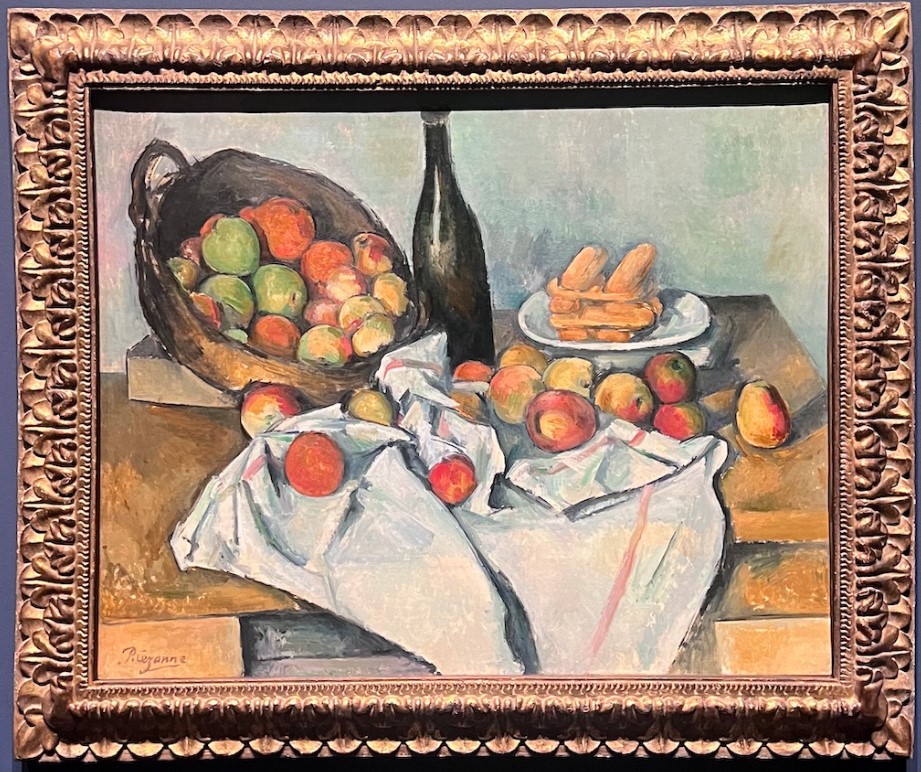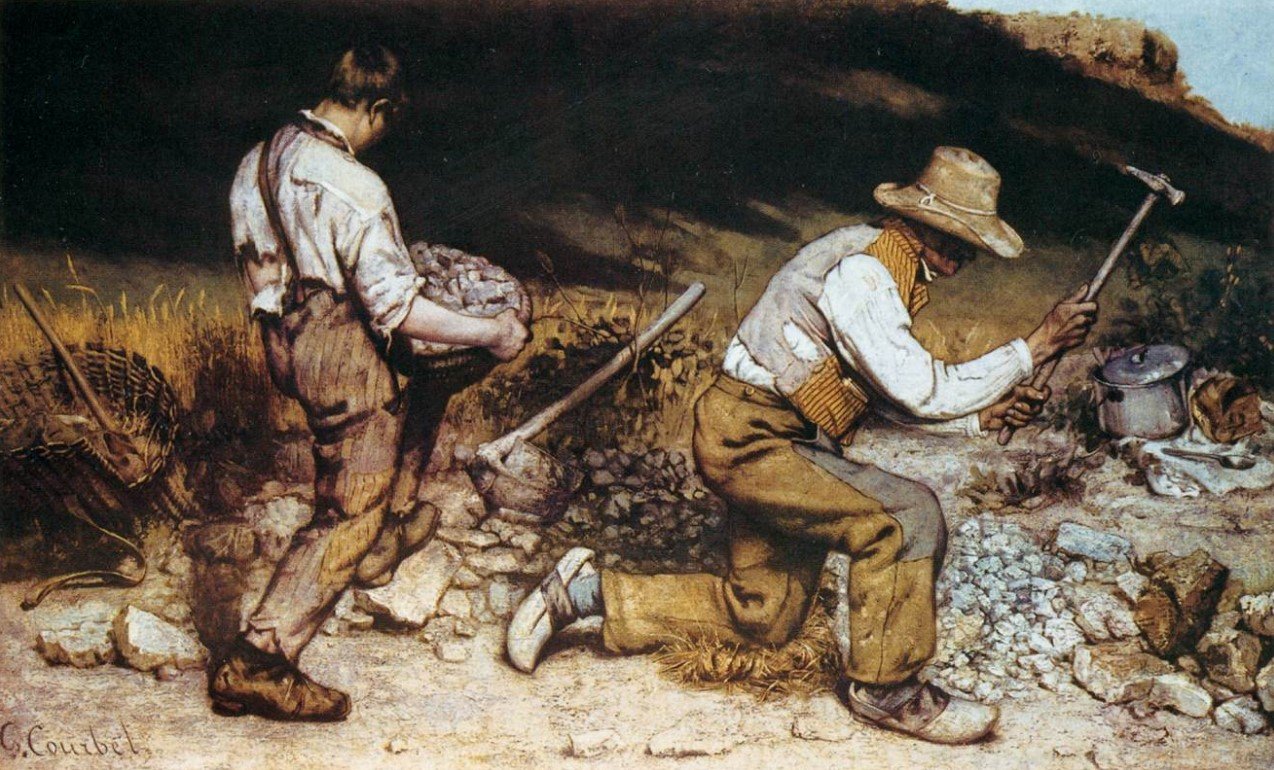Vasily Kandinsky’s The Blue Mountain (Der blaue Berg), an iconic painting 1908-1909, stands as a treasure at the Guggenheim Museum, revealing the artist’s deep connection to the horse and rider motif and its apocalyptic meaning. This painting marks a turning point in the artistic evolution of Kandinsky, who believed fervently in the transformative power of art.
Table of Contents
- Blue mountain and the Guggenheim’s well-kept treasure
- Deciphering Blue Mountain by Kandinsky
- A group of artists in Munich Germany and their influence on Kandinsky for Blue Mountain
- The Blue Mountain as a Testimony to Kandinsky’s Vision
Blue mountain and the Guggenheim’s well-kept treasure
The Guggenheim Museum is known for its vast collection of modern and contemporary art, but among the gems glittering in its galleries is a remarkable painting “Blue Mountain” by Kandinsky. With more than 150 paintings, drawings and prints, Kandinsky’s contribution to the Guggenheim has left an indelible mark on its visitors.

Deciphering Blue Mountain by Kandinsky

Title: Blue Mountain (Der blaue Berg)
Date: 1908-09 Munich / Monaco, Germany
Medium: Oil on canvas
Dimensions: 42 1/4 x 38 7/16 inches (107.3 x 97.6 cm)
Location: Guggenheim Museum, New York
Artwork Type: Painting
Style: Expressionism
Genre: landscape

The centre of attraction
The painting “Blue Mountain” has a distinctive motif: Horses and Horsemen occupying the centre of the composition, a recurring element in several of the artist’s works during the 1900s and 1910s. This apparently simple motif carries with it a profound and fascinating symbolic charge.

The Apocalypse as a common denominator

Kandinsky’s abstract paintings shared the common literary source of “The Revelation of Saint John The Divine“. The artist went on to depict the Horsemen of the Apocalypse, symbolising epic destruction followed by spiritual redemption.
Symbolic Synthesis in Art and Spirituality
The horseman, a recurring element in woodcuts, tempera and oil paintings, was also integrated into the cover designs of key theoretical works, such as the 1910 manifesto “Concerning the Spiritual in Art” and “Blue Rider Almanac”, co-edited with Franz Marc in 1911. This inclusion highlights the symbolic importance of the rider in Kandinsky’s artistic and spiritual vision.


Blue as the main actor
In the present canvas, one can see how his favourite colour, blue, comes to life in a striking way. According to some historians, during the creation of the work known as “Blue Mountain”, Kandinsky immersed himself in the music of Arnold Schönberg.
This creative process reveals the close connection between his synaesthetic perception and his artistic expression, merging two art forms into a single creative act. The music becomes brushstrokes of colour, and the blue, imbued with personal meaning, unfolds in an astonishing way on the canvas.


A group of artists in Munich Germany and their influence on Kandinsky for Blue Mountain
From 1900, Kandinsky connected with the group of abstract artists in Germany, consisting of: Paul Klee, August Macke, Franz Marc, Gabriele Munter. This cultural exchange emphasised his commitment to artistic expression beyond established conventions, marking a crucial period in his career and reflected in “Blue Mountain”.
This collective artistic movement, known as “Der Blaue Reiter“, not only encapsulates the synergistic collaboration between these talented artists, but also marks the birth of an avant-garde movement that would profoundly influence the art scene of the time.

The Blue Mountain as a Testimony to Kandinsky’s Vision
This work of art stands as a visual testimony to Kandinsky’s artistic and spiritual vision. Through the horse and rider, the artist sought to transcend aesthetic barriers and tell stories that transcend the merely natural. In a world where art becomes the tool for transformation.
Other works by the Artist:
[the-post-grid id=”3092″ title=”Blue Mountain”]



